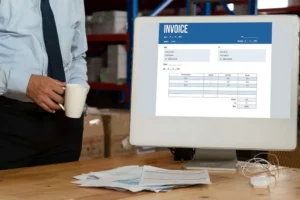Nonprofit organizations should uphold high financial reporting standards to benefit from tax exemptions. Recording operational expenditures may be arduous, but it allows entities to win benefactors’ support and remain accountable. A public-benefit foundation must track its spending and earnings to improve its position and ensure consistent cash flow to fund its missions. In this guide, we will explore the importance of the statement of functional expenses for charitable organizations and provide recommendations.
What Are Functional Expenses?
The term refers to the allocation of costs based on a specific purpose. Recording every transaction carefully allows businesses to go through audits and avoid paying fines.
When comparing functional vs natural expenses, it’s worth noting that nonprofits are required to report both. While all companies have to file their natural expenses, which include sent, salaries, and supplies, among other categories, only charities are also required to classify and report costs according to their purpose.
Businesses allocate costs to various categories:
- Direct expenses: These costs are paid for specific products and services. A nonprofit may need to pay for materials, shipping, or labor.
- Indirect expenses: They are not related to a product and may include rent, utilities, salaries, or supplies.
Understanding the difference between various types of expenditure enables entities to manage their funds effectively.
Components of a Statement of Functional Expenses
Building a successful social-purpose company requires focusing on resource allocation. When generating a statement of functional expenses nonprofit entities must classify them by function and add them to such categories:
- Program services expenses: Every charity has to distribute funds to run its mission. If it supports multiple programs, recording expenses separately is crucial to keep documentation in order.
- Administrative expenses: These costs are related to organizing processes and running a philanthropic institution. They do not necessarily cover a specific program. However, they must include the CEO’s salary and other similar expenses that ensure the stable functioning of an organization.
- Fundraising expenses: Organizing a charity sale and other events to raise money could be quite expensive. Creating a budget entails including the cost of printed invitations, food, a booked venue, and other expenses that are impossible to avoid.
Successful nonprofits recognize the importance of allocating funds between these categories. Tracking general expenses is necessary, as it facilitates running daily operations. It allows firms to remain fully transparent, gain the stakeholder’s trust, and increase the number of their revenue sources.
How to Prepare a Statement of Functional Expenses
By deploying time-tested nonprofit accounting practices, organizations can classify their spending. Like any business, a charity must pay salaries, rent, and taxes. Documenting transactions requires the following steps:
- Collecting data about expenses using accounting software.
- Selecting the most relevant categories for costs associated with paying salaries, running missions, organizing events, and performing other tasks.
- Allocating expenses using the most suitable method and documenting the process to facilitate auditing.
- Deploying accounting systems to create an accurate statement of functional expenses. The spreadsheet must contain columns organized by functional category, separate amounts, and the total amount.
- Reconcile total expenses using the nonprofit statement of activities.
It is advisable to maintain consistency when using categories to get a clear overview of a charity’s activities. The IRS Form 990 includes commonly used classifications.
An entity can deal with expenses using multiple methods:
- Square footage: Rent and utilities are divided depending on the occupied square space by each department.
- Time spent: The size of administrative salaries depends on the time spent on a specific mission.
- Resource usage: Costs are distributed depending on the actual usage of a product by each department.
Nonprofits benefit from hiring experienced professionals or establishing partnerships with trusted providers of accounting services to enhance the accuracy of their financial statements. Specialists deploy the following tools to expedite the progress:
- ClickTime: This advanced program facilitates time-tracking and managing program budgets. It comes with convenient billing and forecasting tools, which enable employees to optimize their processes.
- QuickBooks: The platform has intuitive functionality. It streamlines accounting for nonprofits. Its mobile and desktop versions permit users to access it from anywhere. Even though it has a limited choice of tools, it includes in-built payroll features. Charities use it to manage gifts and other contributions.
- Freckle: This software was built with nonprofits’ needs in mind. It enables companies to create budgets without making mistakes and track time automatically. Its interface is extremely easy to navigate, which enables charities to create timesheets, track expenses, record billable and non-billable hours, and utilize third-party plugins.
By selecting the right software tool and following Generally Accepted Accounting Principles (GAAP), a charitable organization can adhere to laws and follow the regulators’ requirements.
IRS Compliance and Donor Transparency
The pivotal role of financial statements for nonprofits is hard to underestimate. Only by keeping reports mistake-free, organizations can follow IRS regulations and avoid fines.
According to the recommended guidelines, every charity must file and submit a Form 990 annually and indicate its expenses. Failing to perform this task may result in the loss of the tax-exempt status.
Providing nonprofit statement of cash flows and expenditures enables organizations to win donor trust. Local communities should be able to access comprehensive reports documenting an organization’s impact. Maintaining transparency allows charities to build a reputation, increase visibility, and dissipate concerns.
Donors who can see how their funds are used and what impact they have are more likely to become lifetime supporters. Following GAAP and using time-tested methods, entities facilitate auditing, build strong relationships with benefactors, and secure funding.
Best Practices for Functional Expense Allocation
Learning about current regulations facilitates organizing processes and expediting project completion. Entities that want to diversify their sources of funding must deploy efficient approaches to managing their funds. Mastering the essentials of functional expense allocation is a must for every nonprofit seeking to optimize its processes and operations. Charities use the following approaches:
- Deploy dedicated time-tracking tools to allocate salaries: Businesses avoid mistakes by calculating wages based on the recorded time. It allows them to compensate employees for the hours they worked on a project. Integrating time-tracking and payroll tools into a single system facilitates paycheck generation. It enables companies to follow regulations when dealing with overtime or issuing vacation pay. If an employee focuses on fundraisers and then switches to program services the next year, an organization should adjust its methodology to estimate time percentages without mistakes.
- Review allocation methods: When conducting operations in a changing environment, every charity must evaluate and adjust its methodology to produce a statement of functional expenses reflecting the actual state of things. Organizational processes never stay the same, documenting and analyzing their transformations enables entities to choose the right allocation method.
- Establish a partnership with professionals: Achieving accuracy requires using dedicated software. Newly established charities may not have enough resources to hire a team. Outsourcing this task may be a viable alternative for those who want to adopt the most efficient practices without making significant investments.
Following these tips, charities reinforce their status and strengthen their relationships with loyal supporters.
Final Words on Statement of Functional Expenses
Maintaining accuracy when compiling accounting reports is essential to remain transparent and inspire confidence. Charities need to use pro-grade software to generate clear documents containing all the required data. By reviewing and improving categories of expenses, organizations provide error-free documentation. These practices enable philanthropic agencies to build trust.
Achieving the desired goals may be daunting without the assistance of top-level accountants. BooksTime has a team of seasoned professionals who know how to create an immaculately written statement of functional expenses and avoid paying large fines. Get in touch with our experts today and learn how to improve the quality of your reporting.


















